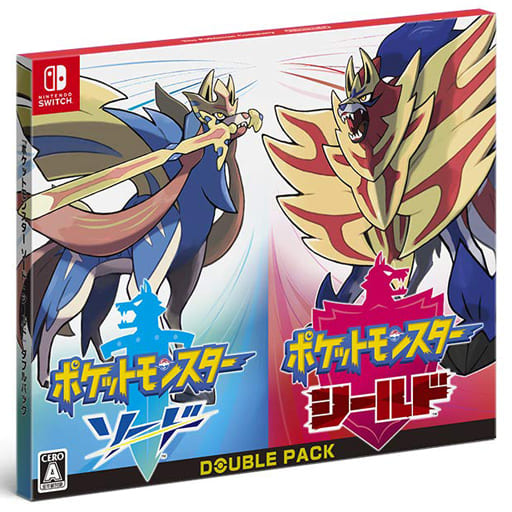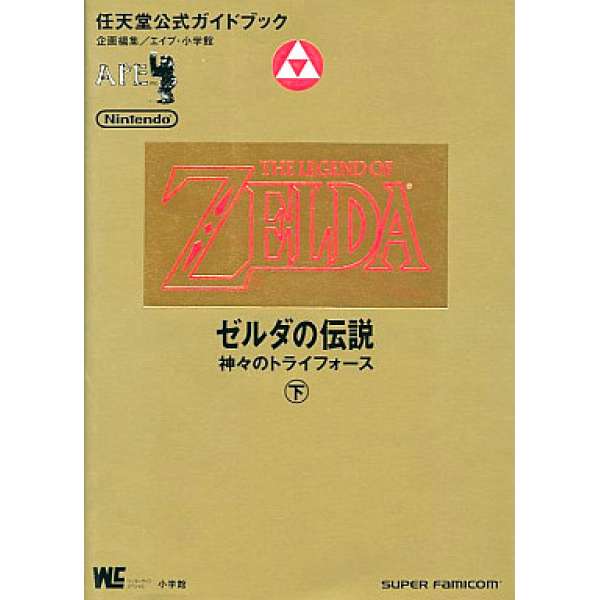薩爾達傳說 織夢島
《薩爾達傳說 織夢島》(The Legend of Zelda: Link’s Awakening)是任天堂於2019年在Nintendo Switch平台上推出的重製版作品,原作則是1993年發行於Game Boy的經典2D薩爾達遊戲。本作不僅在畫面上全面翻新,改為充滿玩具模型質感的精緻3D風格,也針對現代玩家重新調整操作與關卡流暢度,是一次兼具懷舊與創新的翻新嘗試。
劇情方面,《織夢島》是薩爾達系列中少數不發生在海拉魯王國,也沒有出現薩爾達公主與三角神力的作品。故事講述主角林克在航海旅途中遭遇暴風,漂流至名為「庫湖林島」(Koholint Island)的神秘島嶼。當他甦醒時,被當地村民照顧,並得知要離開這座島嶼,唯一的方法就是喚醒沉睡在島中央神殿的巨大夢之魚(Wind Fish)。為此,必須收集八件樂器,打敗潛藏在地下迷宮中的守護者,逐步解開島嶼的謎團。
隨著劇情進展,會逐漸察覺這座島嶼與島上居民的真實性質,故事後段帶出哲學式的主題:「夢境與現實」、「自我與存在」的模糊界線。這樣的敘事手法在當時的遊戲作品中極為少見,讓《織夢島》成為系列中情感深刻、寓意濃厚的特例。尤其在最終揭示夢之魚與整座島嶼可能只是夢境的產物時,對玩家造成強烈的情感衝擊與思考空間。
操作方面,Switch重製版大幅優化原作的系統。原先受限於Game Boy按鈕數量,必須不斷開啟選單更換道具。重製版則將劍與盾固定於主要按鍵,並讓額外的道具分配到其他按鈕上,大幅提升操作效率與節奏感。此外,畫面表現轉為立體但仍維持俯視視角,角色與環境像是上光澤的公仔模型,營造出一種如夢似幻的童話風格,與主題不謀而合。
關卡本體仍保留「地圖探索+地下迷宮」的經典結構。需穿梭於庫湖林島的各種地形,包括森林、沙灘、墓園、山區與村莊等,解開環境謎題、獲得新道具,並逐步打開迷宮入口。每個迷宮設計皆有其主題特色與機制,例如運用跳躍、炸彈、勾繩等解謎道具來突破障礙,最後則與Boss進行戰鬥以獲得樂器。此外,重製版加入由《薩爾達傳說:曠野之息》中的「達伊摩斯」(Dampé's Shack)所主持的「迷宮編輯」模式。利用已完成迷宮的房間片段,自行拼湊新的挑戰關卡,並設下條件供自己或其他玩家挑戰。雖然這個系統相對簡易,無法與《瑪利歐創作家》相提並論,但為原本的單人冒險提供些許延伸樂趣。
市場評價方面,經發售後獲得廣泛好評。媒體普遍稱讚其美術風格清新可愛,音樂重編動人,同時保持原作關卡設計的精妙與劇情張力。許多老玩家對於能以現代畫面重溫這款童年名作感到滿足,而新玩家則被其可愛外表下深刻故事與挑戰性十足的地城設計所吸引。不過也有部分評論指出遊戲在初期版本有輕微的掉幀與載入區域時的卡頓現象,但後續透過更新修正。此外,迷宮編輯系統的深度不足也是被討論的一點,許多玩家希望能有更自由的設計功能。
總結來說,《薩爾達傳說 織夢島》Switch重製版是誠意十足的經典再現,它不僅保留原作的核心魅力與設計精華,更透過現代技術賦予它全新生命。無論是初次接觸這部作品的玩家,或是懷念Game Boy時代的老粉絲,都能在這座如夢似幻的小島上,展開一場感動人心又充滿挑戰的冒險旅程。這款作品不只是系列的經典之一,也再次證明任天堂對於遊戲敘事與遊玩體驗的極致追求。
The Legend of Zelda: Link’s Awakening is a remake released by Nintendo for the Nintendo Switch in 2019. Originally launched in 1993 on the Game Boy, the game is a classic 2D Zelda title that has now been reimagined with a complete visual overhaul. The new version adopts a charming 3D toy-like art style and includes modernized controls and smoother dungeon flow, making it a refined blend of nostalgia and innovation.
In terms of story, Link’s Awakening is one of the few Zelda titles not set in the kingdom of Hyrule and does not feature Princess Zelda or the Triforce. The narrative begins with Link being caught in a storm during a sea voyage and washing ashore on the mysterious Koholint Island. After waking up and being nursed back to health by the islanders, he learns that the only way to leave the island is to awaken the Wind Fish, a colossal creature slumbering within a shrine at the island’s center. To do so, Link must collect eight musical instruments hidden in dungeons across the land and defeat the guardians that protect them, slowly unraveling the secrets of the island.
As the story progresses, players begin to question the true nature of Koholint Island and its inhabitants. The latter part of the game introduces philosophical themes such as the blurry boundary between dreams and reality, and between self and existence. This kind of narrative depth was rare for games at the time of the original release, and it helped Link’s Awakening stand out as one of the most emotionally resonant and symbolically rich entries in the Zelda series. The final revelation—that the Wind Fish and the entire island may merely be a dream—leaves players with a powerful emotional impact and a sense of introspection.
From a gameplay perspective, the Switch remake significantly refines the original systems. In the Game Boy version, the limited number of buttons meant players had to constantly pause the game to switch between items. In the remake, the sword and shield are mapped to dedicated buttons, while additional items are assigned to others, making the gameplay far smoother and more intuitive. The top-down view is retained, but the visuals are now rendered in a glossy, diorama-like 3D style that perfectly matches the dreamlike tone of the story.
The game structure preserves the classic “overworld exploration + dungeon crawling” formula. Players must traverse diverse environments on Koholint Island—including forests, beaches, graveyards, mountains, and villages—solving environmental puzzles, acquiring new gear, and unlocking dungeons. Each dungeon features unique themes and mechanics, such as the use of bombs, jump boots, or the hookshot, and ends in a boss battle that rewards the player with one of the essential instruments.
An additional feature in the remake is the inclusion of the “Chamber Dungeon” system, hosted by Dampé, a character introduced in The Legend of Zelda: Breath of the Wild. This mode allows players to construct custom dungeons using rooms from previously completed dungeons, and set conditions for others (or themselves) to complete. While not as robust as Super Mario Maker, this feature adds a layer of creativity and extends the gameplay for solo players.
Upon release, Link’s Awakening received widespread acclaim. Critics praised its delightful visual design, beautifully reorchestrated soundtrack, and faithful preservation of the original’s intricate dungeon layouts and emotional storytelling. Veteran fans were thrilled to revisit a beloved childhood title with a modern polish, while newcomers were drawn in by the game’s whimsical exterior and surprised by the deep, thought-provoking narrative and clever gameplay.
That said, some reviews pointed out occasional technical issues in the initial release, such as frame rate dips and stuttering when transitioning between areas. These were later addressed through software updates. The dungeon editor feature also faced criticism for its limited depth, with many players hoping for more flexibility and customization in future iterations.
In conclusion, The Legend of Zelda: Link’s Awakening for Nintendo Switch is a heartfelt and faithful remake of a timeless classic. It retains the charm, gameplay brilliance, and emotional resonance of the original while enhancing it with modern graphics and mechanics. Whether you're a newcomer or a longtime fan of the series, this dreamlike island adventure offers a moving, challenging, and unforgettable experience. It stands not only as one of the most beloved entries in the Zelda franchise, but also as a testament to Nintendo's dedication to crafting meaningful and immersive game experiences.
運費計算方式:
貨款滿1000元運費外加90元
貨款1000以下:買1件運費外加 60元,買2件運費外加 70元,
買3件運費外加 80元 ,買4件運費外加 90元
貨到付款外加30元手續費
外島及大陸地區運費另計
付款方式:
線上刷卡:本站採用Paypal線上刷卡
虛擬帳號匯款:屬於您專屬的虛擬帳戶,方便站長查帳使用,本站強力推薦
實體ATM匯款:請將匯款帳號記錄下來至各大銀行ATM提款機轉帳
超商條碼繳費:請列印本站提供的條碼至四大超商繳費
線上轉帳:透過玉山銀行線上ATM轉帳(此系統只支援IE瀏覽器)
貨到付款:本站採用黑貓宅急便貨到付款
其他注意事項:
如需購買線上點數卡請直接跟站長連絡,本站不提供點數卡的線上付款







